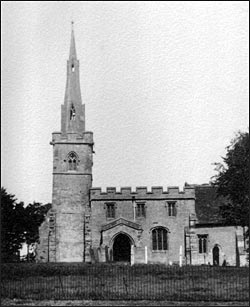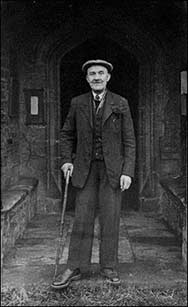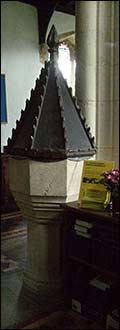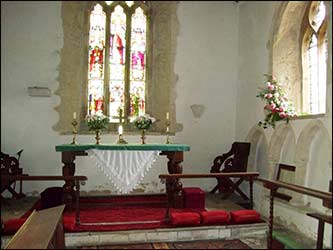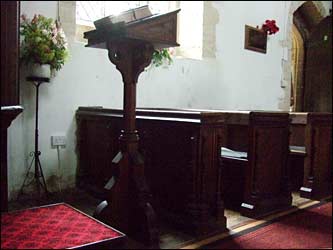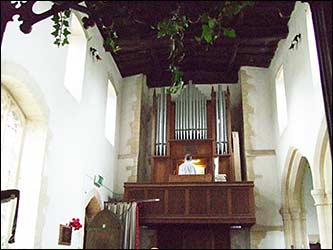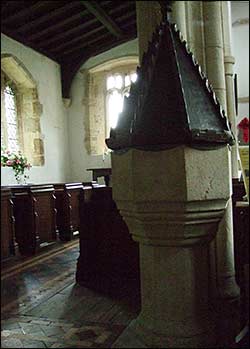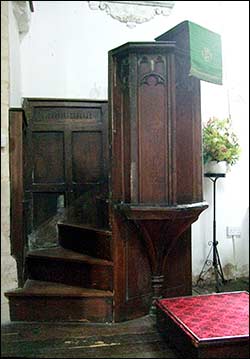|
|||||||||||||||||
| David Hall c1980 |
|||||||||||||||||
|
St Peter's Church - Newton Bromswold
A short history |
|||||||||||||||||
|
|||||||||||||||||
|
The present building is believed to have been dedicated in 1272, as this is the date of the first recorded Rector for this church, although there are traces of an earlier church having stood on the same site.
Walking down the north aisle, the old altar table in front of us in the children’s corner is probably about 1600 and was once the main altar. In the north window, we see the finest old glass in the church. This consists of flanking lights containing canopies and the right hand one has the upper part of a nimbus from a destroyed figure of a saint. In the centre light is the head of a canonised bishop, the precise identity is not known but popular theories are that it is St. Thomas A’Beckett, Archbishop Henry Chichele or St. Hugh of Lincoln. The glass in this window is some of the finest mediaeval glass in the Midlands and is dated approximately 1410 to 1440, as the only other glass like it is at All Souls College, Oxford, which is slightly later than Newton Church. The east window of the north aisle has two tracery lights of yellow and white foliage designs. These are probably of 1420 to 1430 and appear to be in their original positions. The window on the north wall of the chancel is of the heads of the two apostles. They were originally in one of the clerestory windows and formed part of a set of twelve apostles. These two heads were painted about 1420 to 1430 and are of the highest quality. The west window in the south side of the chancel has fragments of fifteenth century canopy work including two seated lions. The main window over the altar was erected by Mrs Ager in memory of her husband, William Ager, around 1900. Mrs Ager also gave the two bishops chairs which stand either side of the altar. To the left of the altar is what is said to be an Easter recess, perhaps this could be the founder’s tomb, but the origin of this is unknown. On the other side are six stone priests’ seats, one with a piscine fixed in it, and this is most unusual for such a small church. The two brasses on the floor are fine old English brasses, one dated 1487 of Roger Hewet inscribed, “Pray for the soul of Roger Hewet, Chaplain, who died 18th of the month April, AD1487 on whose soul God hath mercy, Amen”. The other is to William Hewet dated 1426 and is inscribed, “Pray for the soul of William Hewet, formerly rector of this church, who died 18th day of the month of August in the year of our Lord 1426”. The screen was erected in 1920 in memory of those from Newton parish who were killed in the First World War. The pulpit is 15th century of the perpendicular period, but was greatly restored in 1879 when the whole church was restored under the Church Restoration Act. Some of the original pews remain but most were renewed during the restoration although copied from the original. There are four bells dated 1887, 1727, 1639 and a mediaeval one with the following markings on it, “Crosskeys and crossed arrows, St. Edmund”. The chancel roof is tiled whilst the main roof is flat and dated 17th century. The lean-to roof of the north aisle is old, perhaps 17th century, with moulded principals and purlins, and wallpieces resting on the stone corbels of an earlier roof, carved with heads and grotesques. The organ was built by John Tanner of Raunds and was installed in 1936 and electricity was fitted in the church in 1951. The plaque on the organ reads:
In the churchyard, there remains the base of the old village stone cross.
Church - Snippets |
|||||||||||||||||
